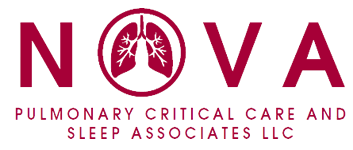What is Occupational Lung Disease
Occupational lung diseases are conditions caused by inhaling certain substances in the workplace over a prolonged period. These substances can include dust, chemicals, fumes, and other airborne particles. Occupational lung diseases can vary widely in severity and presentation, depending on the type of exposure, duration of exposure, and individual susceptibility. Some common types of occupational lung diseases include:
- Occupational Asthma: This condition is characterized by inflammation and narrowing of the airways in response to exposure to certain substances in the workplace. These substances, known as allergens or irritants, can include dust, chemicals, fumes, or animal proteins. Symptoms of occupational asthma may include wheezing, coughing, shortness of breath, and chest tightness, which typically improve when the individual is away from the workplace.
- Occupational Pneumoconiosis: Pneumoconiosis refers to a group of lung diseases caused by the inhalation of mineral dust particles, such as silica, coal dust, or asbestos fibers, typically in industrial settings. Examples include silicosis, coal workers’ pneumoconiosis (black lung disease), and asbestosis. These conditions can lead to the formation of scar tissue (fibrosis) in the lungs, which can impair breathing and increase the risk of other complications such as respiratory infections and lung cancer.
- Occupational Hypersensitivity Pneumonitis (HP): HP is an immune-mediated lung disease caused by repeated exposure to organic dusts, molds, or other antigens in the workplace. These antigens trigger an inflammatory response in the lungs, leading to symptoms such as coughing, shortness of breath, fatigue, and flu-like symptoms. HP may develop gradually over time with chronic exposure or occur suddenly with acute exposure to high levels of antigens.
- Occupational Chronic Obstructive Pulmonary Disease (COPD): Exposure to certain airborne pollutants, such as cigarette smoke, industrial dusts, or chemical fumes, in the workplace can contribute to the development or worsening of COPD, a progressive lung condition characterized by airflow limitation and breathing difficulties.
Prevention of occupational lung diseases involves identifying and controlling exposure to hazardous substances in the workplace through measures such as ventilation, personal protective equipment (e.g., respirators), engineering controls, and proper workplace hygiene practices. Early recognition of symptoms and prompt medical evaluation are essential for diagnosing and managing occupational lung diseases to prevent progression and minimize long-term complications.




Office Locations
Conveniently located near you in Loudoun and Fairfax VA
NOVA Pulmonary – Dulles
24430 Stone Springs Boulevard
Suite 200
Dulles, VA 20166
NOVA Pulmonary – Lansdowne
19415 Deerfield Avenue
Suite 301
Landsdowne, VA 20176
Meet the team at NOVA Pulmonary Critical Care and Sleep Associates

Dr. Aditya N Dubey, M.D, F.C.C.P. – Founder
Specialty:
Pulmonary, Critical Care and Sleep Medicine
Board Certified by American Board of Internal Medicine in the Subspecialities of Pulmonary Medicine, Critical Care Medicine and Sleep Medicine. Learn more about Dr. Dubey

Dr. Petra Thomas, M.D.
Specialty:
Pulmonary Medicine
Board Certified by American Board of Internal Medicine in the Subspecialities of Pulmonary Medicine. Learn more about Dr. Thomas

Dr. Arman Murabia, M.D.
Specialty:
Pulmonary, Critical Care and Sleep Medicine
Board Certified by American Board of Internal Medicine in the Subspecialities of Pulmonary Medicine, Critical Care Medicine and Sleep Medicine. Learn more about Dr. Murabia

Rebekah Lee, AGNP-C
Nurse Practitioner. Learn more about Rebekah Lee

Christine Amorosi, AGNP-C
Nurse Practitioner. Learn more about Christine Amorosie
